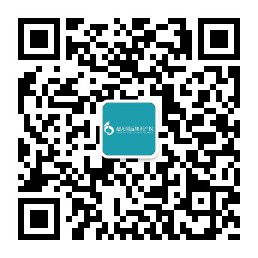The Supreme Court of China issued a judicial interpretation on punitive damages for intellectual property rights
Written by: Xiao HAN (Nicole) and Haoyu ZHOU (Elliot)
On 3rd March, 2021, the Supreme People’s Court issued "Interpretation of the Supreme People's Court on Punitive Damages Concerning the Trial of Civil Cases Involving Infringements upon Intellectual Property Rights" (hereinafter referred to as "judicial interpretation").
The judicial interpretation includes specific provisions on how to apply punitive damages in civil cases involving intellectual property, and how to determine “intentional” and “serious circumstances”, and how to determine the bases and multiples when calculating the punitive damages.
Some of the most important provisions are copied below:
1. If the plaintiff requests the application of punitive damage, the amount of punitive damage, the method of calculation, and the facts and reasons on which it is based shall be specified when the lawsuit is filed.
If the plaintiff adds a request for punitive damages before the end of the court debate of first instance, the people's court shall approve the request; if a request for punitive damages is added in the second instance, the people's court may conduct a mediation based on the parties' willingness. If the mediation fails, the parties shall be notified to file another lawsuit.
2. The following situations involved in intellectual property infringement can be preliminarily determined as “intentional” by the people's court:
(1) The defendant continues to commit the infringing act after being notified or warned by the plaintiff or the interested party;
(2) The defendant, its legal representative or manager is the legal representative, manager or actual controller of the plaintiff or the interested party;
(3) The defendant and the plaintiff/the interested parties have relationships involving labor, cooperation, licensing, distribution, agency, representative, etc. AND the defendant was in touch with the infringed intellectual property rights;
(4) The defendant has business dealings with the plaintiff or the interested parties, or the defendant and the plaintiff or the interested parties had negotiations for the conclusion of contracts, etc., AND the defendant was in touch with the infringed intellectual property rights;
(5) The defendant commits acts of pirating or counterfeiting registered trademarks; and
(6) Other circumstances that can be determined as intentional.
3. The following actions of the defendant may be determined as “serious circumstances” by the people's court:
(1) After being punished by an administrative penalty or a court decision for infringement, the defendant commits the same or similar infringement act again;
(2) Taking the infringement of intellectual property rights as business;
(3) Forging, destroying or concealing evidence of infringement;
(4) Disobeying the preservation ruling;
(5) The benefit obtained by the infringer through infringement or the loss of patentee caused by the infringement is considered huge;
(6) The infringement act may endanger national security, public interest or personal health; and
(7) Other circumstances that can be determined as serious.
4. When determining the amount of punitive damages, the people's court shall use the actual loss of the plaintiff, the amount of the defendant's illegal gains or the benefits obtained by the infringer through infringement as the base in accordance with relevant laws. This base shall not include the reasonable expenses paid by the plaintiff to stop the infringement; if otherwise provided by law, it shall be in accordance with such provisions.
If the abovementioned actual loss of the plaintiff, the amount of the defendant's illegal gains or the benefits obtained by the infringer through infringement cannot be calculated, the people's court shall determine the base according to reasonable multiple of the royalties.
5. The people's court orders the defendant to provide the account books and materials related to the infringement in accordance with the law. If the defendant refuses to provide or provides false account books and materials without justifiable reasons, the people's court may determine the base amount of punitive damages by referring to the plaintiff's claims and evidence.
Particularly, (3) and (4) above in Article 2 required that the plaintiff and the defendant have specific relationships AND the defendant was in touch with the infringed intellectual property rights. That is to say, the infringement would not be considered “intentional” if the defendant is merely aware of the infringed intellectual property rights but has no specific relationship with the plaintiff.
For example, if the defendant found the plaintiff's patent when conducting a freedom-to-operate patent search, but they still chose to infringe for the business interests. If there was no relationship (e.g., collaboration) between the plaintiff and the defendant, the infringement may not be regarded as an intentional infringement.

 adm
adm


